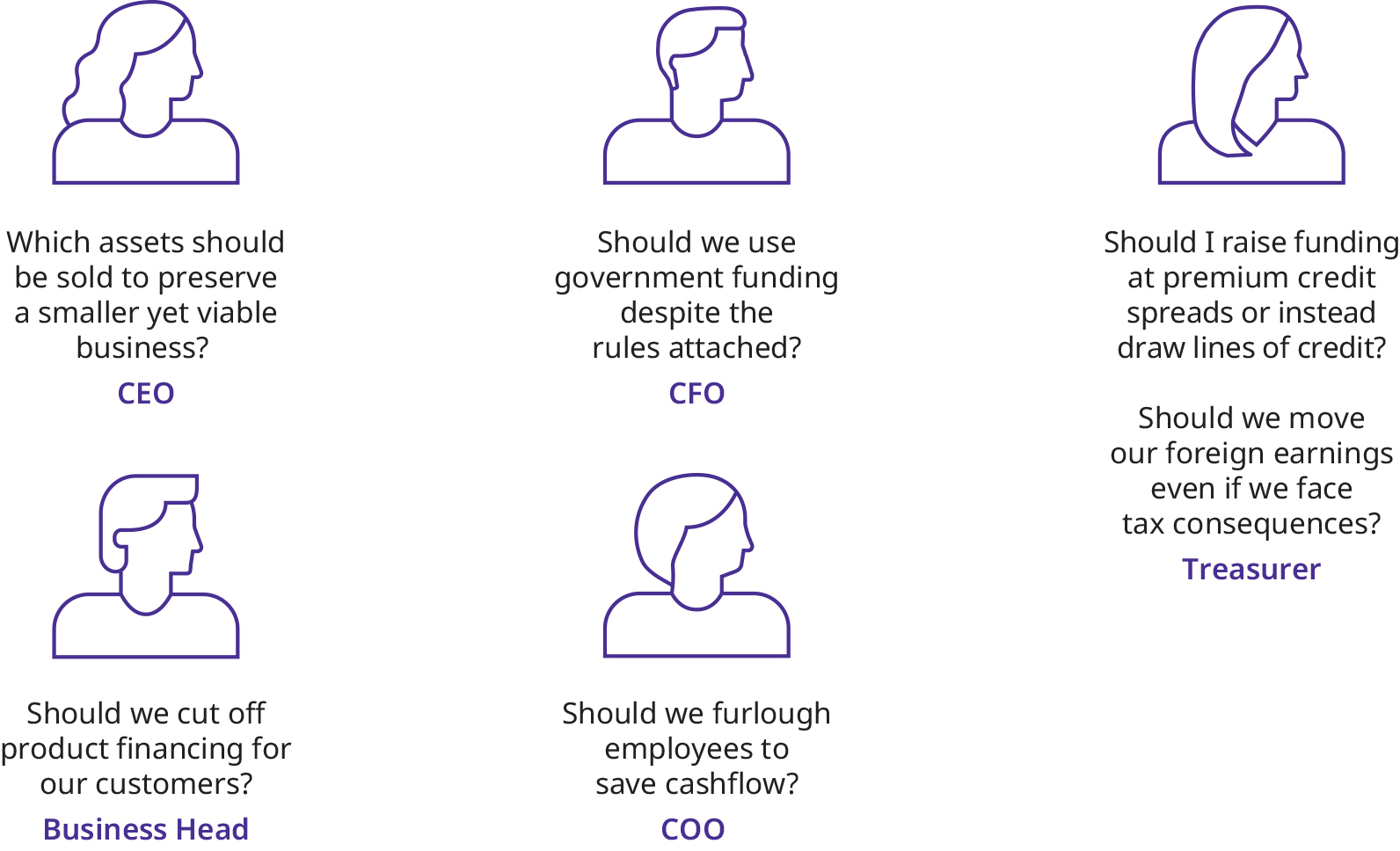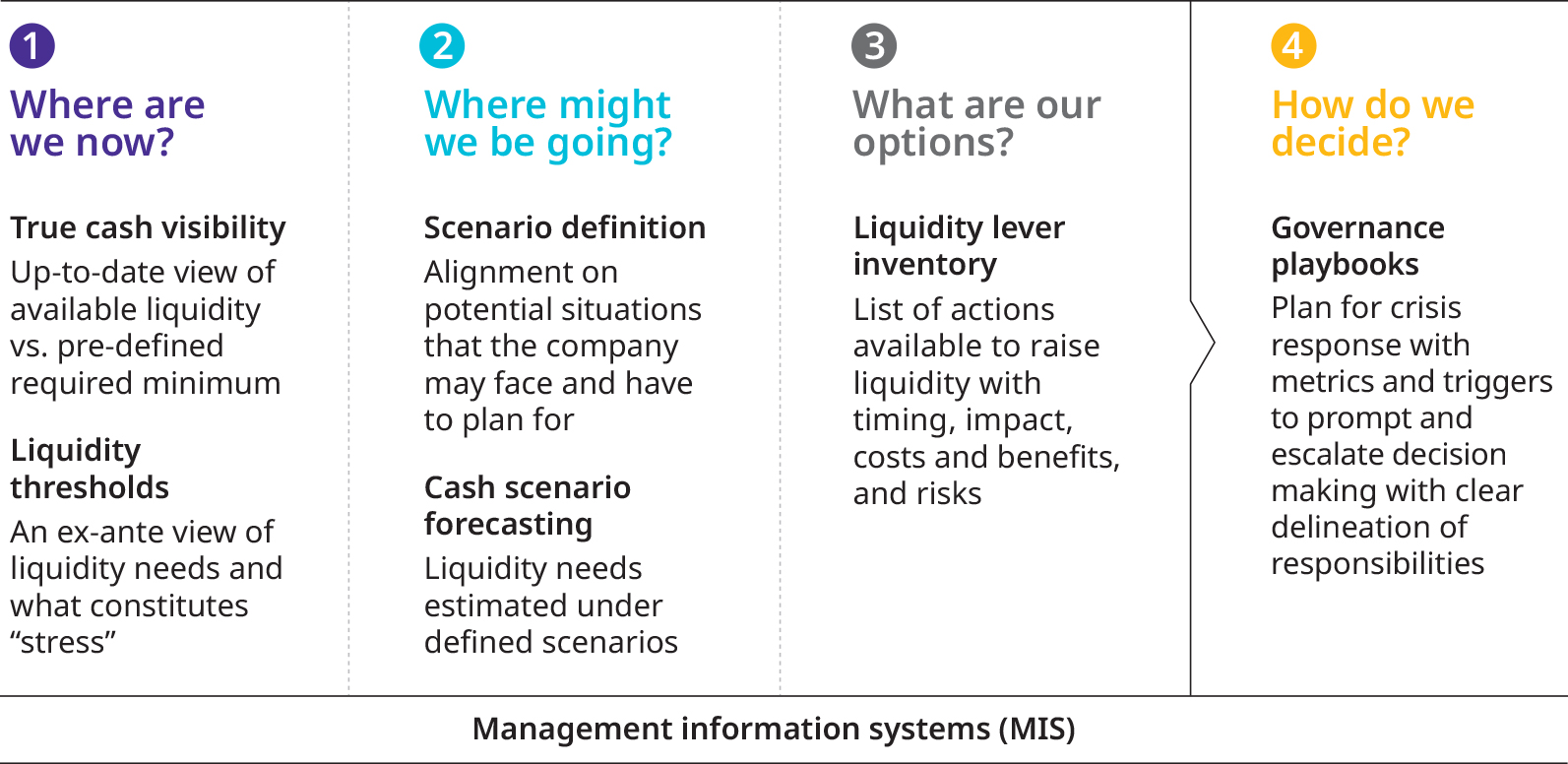This article was first published on June 9, 2020.
Managing liquidity during COVID-19 has become both challenging and critical for businesses. The pandemic has exposed important gaps in the frameworks, analytic tools, and processes by which companies make decisions in crisis regarding liquidity.
Decisions that are rapidly made today frequently suffer from a lack of robust underlying information, insufficient consideration of trade-offs and implications for the broader ecosystem (for example, suppliers), and lack of clear oversight. This challenge is exacerbated in times of crisis, where decision making needs to be well-informed and quick to avert financial distress and unintended consequences.
Closing critical gaps — especially for urgent needs like cash visibility — should be a priority considering the likelihood of multiple waves of the pandemic and a prolonged economic crisis.
Our paper helps companies to look forward, and build well-defined liquidity management capabilities to bolster resilience and profitability during the immediate COVID-19 crisis and for years to come. Below is an excerpt from our paper, "Making Good Decisions In Bad Times," for the full PDF please click here.
78 percent of corporate treasury professionals indicated that enhancing liquidity and cash management is a top three priority for their company coming out of this crisisA recent poll conducted by Oliver Wyman and the Association for Finance Professionals (AFP)
LIQUIDITY MANAGEMENT QUESTIONS THAT COMPANIES NEED TO ANSWER (ILLUSTRATIVE)

CRITICAL CAPABILITIES FOR LIQUIDITY MANAGEMENT
The liquidity management challenge is often compounded by the lack of a cohesive decision-making framework and legacy enterprise resource planning solutions that are slow, inflexible, and do not provide relevant information as well as a lack of clear delineation of governance and accountability.
In order to make good decisions consistently over time and in the face of uncertainty, companies need to effectively develop their capabilities to answer four central questions (see Exhibit below). For liquidity management, this translates to a set of specific capabilities that are described within this paper.
With liquidity, which can deteriorate quickly, the ability to act promptly can mean the difference between survival or failure in times of distress
LIQUIDITY MANAGEMENT DECISION MAKING

ADDRESSING BLIND SPOTS IN THE TIME OF COVID-19
For many companies, fully developing the capabilities for crisis decision making will be a journey rather than a “leap.” In the face of competing priorities, companies can use the following approach to prioritize this journey to ensure consistent and tangible progress:
Immediate term:
Address any “blind spots” in cash visibility and forecasting approaches. These capabilities are critical for day-to-day liquidity management and enhancements and will immediately provide benefits such as additional headroom or the ability to better anticipate shortfalls.
Short term (within the next 3-6 months):
Engage senior leadership and the board in a discussion to align on liquidity thresholds, discuss and define scenarios, and the relative costs and benefits of levers. This will enable a more informed and rapid response to a liquidity stress (such as a second wave of the pandemic).
Medium term (within the next 6-18 months):
Formalize capabilities within a governance playbook and define a prioritized plan to address longer-term gaps to build out the foundational capabilities (for example, data collection, MIS upgrades, etc.) to ensure that improvements are incorporated into the company’s modus operandi and can serve in future crises when needed the most vs. being a one-time build.
THE PATH FORWARD
Having liquidity decision-making and management capabilities in place prior to the advent of COVID-19 would have served many companies well. Companies need to develop and upgrade management information systems to be able to source data (often from multiple systems), conduct analysis, and generate reports in a manner that can be refreshed quickly (ideally at the press of a button). While most companies are significantly far from achieving this level of functionality — advancements in process and data transformation tools can be effectively leveraged to help companies make rapid progress.
At Oliver Wyman, we can work with your team in enhancing your current liquidity management capabilities and leveraging the necessary tools for data transformation—to increase profitability today and for the future.









